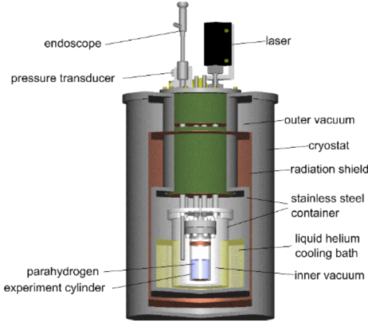Investigations for the management of liquid and gaseous hydrogen under compensated gravity conditions (WST)

research area: fluid dynamics
experiment title:
Investigations for the management of liquid and gaseous hydrogen under compensated gravity conditions
experiment acronym: WST
funding agency: DLR
grant number: 50RL1621
performing organization:
ZARM, Universität Bremen
prime investigator:
Prof. Dr. Michael Dreyer
experiment objective
abstract
The most powerful rocket upper stages use liquid oxygen (LOX) as oxidizer and liquid hydrogen (LH2) as propellant. By shutting down the engine, the spacecraft enters microgravity and the fluid free surface is now dominated by capillary forces. Since liquid hydrogen is a perfectly wetting fluid with the contact angle 0° an axial sloshing motion is initialized. First technical investigations of the reorientation period were performed by Siegert et. al. in the context of the Apollo program in the 1960s. They used a small drop tower, to examine the reorientation of different liquids at room temperature, liquid Nitrogen and LH2. In contrast to storable liquids LH2 is kept under saturation conditions and the surrounding walls are superheated. During the rise at the wall the meniscus travels through a wide range of superheat temperatures and the motion of the meniscus is disturbed by the vaporization and its recoil. The influence of these effects on the sloshing motion of liquid argon and methane was investigated scientifically by Kulev et. al. and by Schmitt and Dreyer using LH2 in the drop tower in Bremen, Germany.
related publications
- NIKOLAI KULEV & MICHAEL E. DREYER. 2010. Drop Tower Experiments on Non-isothermal Reorientation of Cryogenic Liquids. Microgravity Sci. Technol. 22.4. 463–474.
- NIKOLAI KULEV, STEFFEN BASTING, EBERHARD BAENSCH & MICHAEL DREYER. 2014. Interface reorientation of cryogenic liquids under non-isothermal boundary conditions. Cryogenics 62. 48–59.
- SEBASTIAN SCHMITT & MICHAEL E. DREYER. 2015. Free surface oscillations of liquid hydrogen in microgravity conditions. Cryogenics 72.1. 22–35.
experiment campaigns
experiment year: 2017
number of drops: 6
experiment year: 2016
number of drops: 9


 "
"